“Person 1: Mujhe ‘sugar’ ho gayi hai {I am diagnosed with diabetes}.
Person 2: Arre koi chinta nahi, wo insulin injection lagega na, sugar thik ho jayegi {There is no need to worry. Once you take the insulin injection, diabetes will get better}.”
In your day to day life, you might have come across various scenarios wherein people having diabetes take insulin day and night to keep their blood sugar levels under control. You might wonder if insulin is the solution for diabetes. To understand further, let’s dig in in-depth.
Diabetes is often called ‘sugar’ in our layman language, even though it is simple to understand that it deals with the fluctuations in blood glucose levels of our body. Yet it is an umbrella term when it comes to its medications according to their types.
Whenever we get to know if a person is diabetic, the first thought that comes into our mind is that the person must be taking/ starting with ‘insulin injection’. Is this really the case with diabetic patients?
The answer is No! A diabetic is prescribed either insulin or medicine based on multiple factors like the type of diabetes, level of blood sugar, body weight, eating pattern etc…
Insulin is this one word that has always been associated with diabetes. People often get confused about the use of insulin, how it impacts diabetes and types of insulin-like short-acting and long-acting insulin for diabetes.
Let’s sort all your doubts about insulin injection for you to have a better understanding.
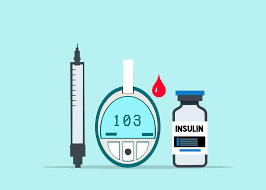
Insulin injection is used as a treatment for diabetes when the natural insulin in your body isn’t used properly or if your body stops making insulin. As there are different types of diabetes, medications, and insulin for the same may or may not differ.
Types of Diabetes
The various types of diabetes are –
1. Gestational Diabetes
As the name suggests this type of diabetes is observed in pregnant women. Since pregnancy is a period where strict control of sugar levels is needed to ensure the safety of both the mother and the baby, either oral diabetic medications or insulin is suggested to ensure the same.
2. Type 1 Diabetes
This type of diabetes uses the administration of artificial insulin because the body can not make its own insulin.
3. Type 2 Diabetes
Here, diabetes can be managed with oral medications along with lifestyle management and medicines. There are certain cases where only these methods don’t work in controlling the blood sugar levels. In such cases, the role of insulin comes into play.
Advertisements
REPORT THIS AD
Now the question arises, which insulin or which medicine to take. For this, you need to know the various types of insulin available in the market. There are various types of insulin which are-
1. Short-acting insulin
2. Long-acting insulin
3. Rapid-acting insulin
4. Intermediate insulin
You can get more information about these insulins and other medicines for diabetes, you can read our blog- Which is the best medicine for diabetes. And if you want to manage your diabetes under the guidance of medical experts, you can download the Zyla app or visit our website- Zyla.in.
In this blog, we are going to discuss long-acting insulin for diabetes and specifically- Lantus.
What is Lantus and how does it work?
Lantus insulin is a type of long-acting insulin for diabetes. Long-acting insulin has a very specific feature which is that this type of insulin doesn’t peak.
This means that this insulin has the ability to work on controlling blood sugar levels for a whole day. The long-acting insulin, as the name suggests stays in the body for 24 hours. The effect of this insulin starts within 2–3 hours of its administration.
Lantus is the name of the product (insulin glargine). Due to its popularity, we use Lantus as a mainstream word for insulin and use it interchangeably.
Insulin glargine or Lantus as we know is artificial or man-made insulin. This artificial insulin works just like the natural hormone- insulin, produced in our body. With the help of the pancreas, it helps in reducing the glucose level in your body.
Insulin glargine is precisely selected to cover up the weaknesses of intermediate-acting insulin. It works by administering it in the form of injection in the subcutaneous layer of the skin. The areas from where you can inject insulin into your body could be the abdomen region, hips, upper area of the arm and thighs.
Lantus as an injection has a solution of 10-millilitre (mL) vials that keep 100 units of insulin glargine.
Lantus also comes in the form of a pen or the ‘injection pen’. It is known as a Solostar pen and it contains 3mL of the solution which keeps 100 units of insulin per mL.
Insulin glargine is used to treat Type 1 and Type 2 Diabetes, but in Type 1 Diabetes it is usually used with another type of insulin, which is usually short-acting insulin.
In Type 2 Diabetes, it may or may not require another type of insulin, also in this type of diabetes, oral medications may be taken along with insulin.
Our topic in the spotlight, Lantus insulin is used for the treatment of diabetes in people over the age of 18 years and in some cases, in children of six years or older.
The dosage units of Lantus differ in both types of diabetes, which would be discussed in upcoming sections.
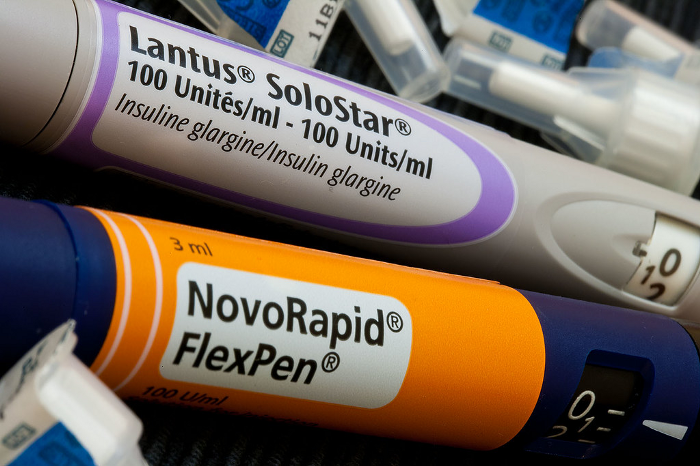
How to Administer Lantus (Insulin Glargine)?
The working of insulin is actually a very fascinating process and all thanks to the revolution of medical sciences that this artificial insulin can be used today. Now, the question that comes into play is how we can inject insulin into our bodies.
The first and foremost factor is taking Lantus- long-acting insulin for diabetes as per the units prescribed by the doctor.
The critically important steps which should be taken care of when injecting insulin is-
- Take it out from the fridge 10 mins before injecting otherwise there are chances of getting cold in winters or infections or blood sugar level fluctuations.
- Set the units on the dial of the insulin pen, carefully (as prescribed to you by your doctor).
- Clean the area where you plan to inject the insulin with normal water and a clean cloth. No need for an anti-septic.
- Pinch your skin or fold your skin smoothly with the help of your thumb and forefinger.
- Inject the insulin subcutaneously at a 90-degree angle. If you’re injecting in the abdomen then it must be 2 inches away from the navel.
- Keep it injected for 10 seconds so that it does not leak. To make it easy, you can count to 10 and then remove it slowly.
- In future, one can prick clockwise or anticlockwise to avoid injecting in the same site. For abdominal administration, prick clockwise or anticlockwise around the navel.
Other points to keep in mind:
- If you’re using Lantus injection (not a pen), it is advised to let go of the initial two drops of insulin to remove bubbles/ air.
- While travelling, keep insulin in a silica pouch (keep the pouch overnight in the freezer before use) or an icebox for 10–12 hours.
- Shaking or rubbing of Lantus before use is not required. Avoid it to prevent bubble formation.
- Using the same needle for a long time causes the needle to become blunt which can cause hardening of the skin leading to leakage of insulin. So, the needle of the insulin should be changed after every 3rd-4th prick.
- For hardening of the skin, you can massage with warm oil or discuss with your doctor.
Did you know that the best place to inject insulin is the abdomen due to the presence of more fat around the area and is less painful?
Lantus (insulin glargine) Dosage
The changes in the Lantus (insulin glargine) dosage should be made after considering factors like the metabolic requirements of the person and after carefully monitoring the blood sugar levels.
The adjustments in the units or the dosage of the insulin is also influenced by the lifestyle of a person. The lifestyle changes of the person include the nutrient intake, level of physical activity and the alterations in liver or kidney related functioning of the body.
The changes in dosage should only be made if prescribed and directed by a doctor or a medical supervisor who keeps a track of your blood sugar level trend.
Lantus insulin or Insulin Glargine- the long-acting insulin for diabetes dosage is available in three types of forms-
1. Carton– This consists of 5 ‘solostar’ pens of 3 ml
2. Solostar Pen- 3 ml of 100 units/ml
3. Vial- 10 ml of 100 units/ml
TYPE 1 DIABETES
In Type 1 Diabetes, Insulin Glargine is always taken in combination with short-acting insulin.
The insulin dosage of Lantus, for people having type 1 diabetes is one-third of the total dosage administered in a day. This means a very generic threshold dose of Lantus is given i.e. 33%. The remaining insulin dosage is met by short-acting insulin.
If you require an expert opinion on your insulin, then you can download the Zyla app or visit our website- Zyla.in to enrol in our program and start working on your health.
TYPE 2 DIABETES
The people who haven’t been administered insulin ever, are recommended to administer 0.2 units/ kg or mainly 10 units once a day.
The units of the dosage can be adjusted accordingly with the inclusion of short or rapid-acting insulin and if the person is consuming any oral antidiabetic drugs.
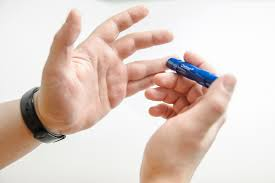
The most important thing to be kept in mind is that Lantus or insulin glargine is not used for curing diabetes. It is important to understand that it’s a medication that is artificial or man-made insulin and it helps in controlling the blood sugar level.
Lantus and other Drug’s Interactions
Using Lantus with other sugar controlling medications, it is very essential for you to be cautious with units of insulin injected into your body.
The significance of the concept of drug interaction with insulin is crucial to understand as we are dealing with sensitive health issues which will impact all the metabolic processes of our body.
The following drug — Lantus interactions are to be taken care of-
1. MEDICATIONS THAT CAN CAUSE THE INCIDENCE OF HYPOGLYCEMIA (LOW BLOOD SUGAR LEVEL)
This includes anti-diabetic drugs, receptor blocking agents, somatostatins, sulfonamide antibiotics.
Lantus is a long-acting insulin for diabetes and it’s intervention with such medicines can cause hypoglycemia so it must be taken after careful monitoring of the doctor.
2. MEDICATIONS THAT MAY IMPACT THE EFFICIENCY OF LANTUS
A reduction or increase in the dosage of Lantus is required when Lantus is taken on conjugation with medicines like corticosteroids, danazol, oral contraceptives, epinephrine, thyroid hormones and other drugs.
There are certain medications that reduce the cholesterol levels like fibrates, such medicines have the capabilities of increasing blood glucose reducing the impact of the Lantus.
3. MEDICATIONS THAT MAY INCREASE OR DECREASE THE FUNCTIONAL CAPABILITY OF THE LANTUS
The above-mentioned point deals precisely with the decrease in blood sugar reduction effect of Lantus.
Well, there are certain medications that can increase or decrease insulin’s functional abilities to lower blood sugar levels, these include disopyramide, alcohol, lithium salts or beta-blockers and such medicines.
The intervention here is similar regarding adjusting the dosage of insulin with the medicines.
4. MEDICATIONS THAT MAY IMPACT THE SYMPTOMS OF HYPOGLYCAEMIA
This happens when these medications nullify the symptoms experienced during such episodes, in such cases, there is a need to work on the frequency of managing the low blood sugar levels when Lantus and the medicines are given in conjugation.
One of the commonly asked questions in terms of drug interaction of Lantus is with metformin. Lantus can be taken with this medicine, only if blood glucose level requires more control but should only be taken if a medical practitioner/doctor or diabetes specialist prescribes it.

Storage and Handling of Lantus
Long-acting insulin for diabetes- Lantus or insulin glargine is actually a transparent solution that contains 100 units per mL.
Lantus should never be stored in the freezer; this implies that it should never be frozen. One should always dispose of it if found in a frozen state.
1. How to store a new Lantus (one which is not in use)?
– Keep the Lantus in the refrigerator and use it till it gets expired.
2. How to store Lantus which is in use?
– The vial should be kept in the refrigerator (considering weather conditions here) and should be used within 28 days.
– The injection pen should be technically stored at room temperature and should be administered in 28 days.
Disposal of Lantus
Storing the injection properly is a priority and so is its disposal. After using the syringe or pen to administer Lantus, dispose of the needle used for pricking immediately.
Try to store the used needles in a puncture-resistant container, where these needles can’t prick or poke through it.
Make sure that the needle of this long-acting insulin for diabetes is away from the sight of children or pets.
Lantus side Effects
Here are a few lantus side effects which you need to look out for:
- Hypoglycemia– This can be taken as a side effect as well as a warning because this is a very sensitive side effect of the Lantus. To prevent this, get the guidance of the experts at Zyla, download the Zyla app or visit our website- Zyla.in.
- Lipodystrophy– The constant administration of insulin into the subcutaneous layer can result in impressions or cavity-like pit looks in the skin.
- Weight gain– It is also one of the common side effects of insulin.
- Other side effects– Like palpitation, swelling of the tongue, itching, water retention (oedema) or bloated face or throat, and a rash on the body.
Thus make sure to take it as prescribed by your doctor so that you can prevent Lantus (insulin glargine) side effects.
Warnings
- One of the most important precautions is to not share insulin pens or needles with anyone and not to reuse any needles multiple times.
- It is important to change the site of administering the insulin as administering the insulin at the same point can cause lumps in the skin, making it very sensitive and even damaged.
- Make sure your doctor is well informed about any other oral medications that you are taking, which even includes any other type of ‘OTC’ or Over The Counter medicines.
- The time one injects insulin during the day should be kept consistent.
- If you’re feeling weakness, trembling of hands and legs, sweating etc, it could be an episode of hypoglycaemia, in such cases it is important for you to follow your doctor’s advice.
- Potassium helps in regulating various metabolic processes. Lantus insulin can be responsible for a reduction of potassium from outside the cells to inside the cell space. If not treated timely, it can result in various complications like respiratory paralysis.
- Mixing up the wrong insulin type is predominantly one factor that should be taken care of. There are at times possibilities of mix-ups of long-acting insulins and rapid-acting insulins, which implies one should always go through the label of the insulin thoroughly.
- Since Lantus is usually administered with a combination of oral anti-diabetic drugs, specifically Thiazolidinediones (TZD), these can result in medicine oriented retention of fluid which may lead to adverse heart health conditions.
- If a patient misses his/her dose, ask your doctor to guide you through the plan of action, don’t take it by yourself at random times.
- Make sure you don’t inject insulin in a vein or muscle.
Alternatives to Lantus
There are several alternatives for Lantus which can act as a long-acting insulin for diabetes. Examples:
1. Toujeo ( Basaglar) — Insulin Glargine
2. Tresiba- Insulin Degludec
3. Levemir- Insulin Detemir
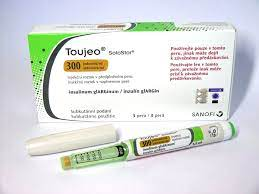
There are pre-mixed insulin options also available which consist of long-acting insulin and short-acting insulin, it helps in better management of blood glucose levels that may spike after meals.
Last but not the least, it is very important to understand that the Lantus, or insulin glargine is artificial insulin at the end of the day which does not cure diabetes. It helps in controlling blood sugar levels.
It’s a friendly reminder, that diabetes, especially type 2 is a lifestyle disorder and the right medication, which is well consulted by a doctor along with lifestyle alterations like right nutrition, exercise and so on is the key to it’s management.
The science and medicine field has evolved immensely which is why we have drugs like these which are a boon in helping mankind. However, along with this being a boon, there are side effects and warnings.
Make sure you get the right medications and changes in dosage if required, only after a prescription from a medical practitioner or a doctor, as this is a very sensitive topic. Let’s do our bit by educating our near and dear ones and giving diabetes a tough fight.
For management of high blood sugar levels holistically, Zyla can help you. Zyla has a team of 50+ medical professionals guiding you through medicines, diet, exercise etc to win the battle against diabetes.
You can download the Zyla app or visit our website- Zyla.in and enrol in Defeating Diabetes Program to start your health journey.
Stay healthy!
Connect with us:
- Subscribe to our Youtube channel: https://bit.ly/2o19OzE to watch videos on health and health-related conditions.
- Find us on Facebook:https://www.facebook.com/zylahealth
- Join our Facebook community, “Defeating Diabetes” and get daily updates:https://bit.ly/2nloObl
- Find us on Instagram:https://www.instagram.com/zylahealth/
- Visit our website:https://www.zyla.in/
- Talk to us on WhatsApp — https://goo.gl/kjofP
For more information, you can visit here
https://blog.zyla.in/lantus-long-acting-insulin-for-diabetes-zyla-health-927fb050810c




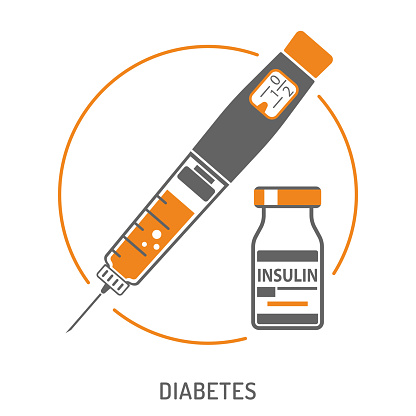
Comments